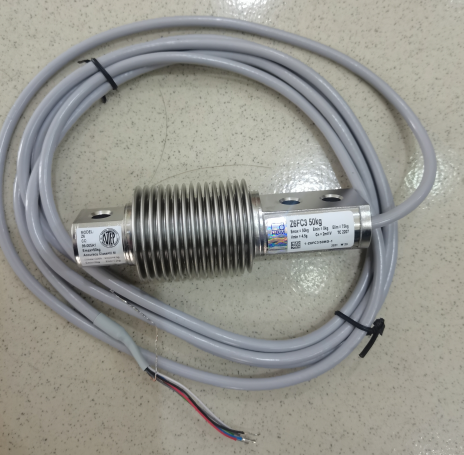Inductive force transducer
Inductive sensors are devices that use the principle of electromagnetic induction to detect or measure items. When the magnetic field passing through it changes, the current will flow through the circuit containing the inductor, which is the opposite of when the current passes through the inductor and creates a magnetic field.
Through this effect it is possible to find metal objects that interact with magnetic fields. Inductive sensors can work in wet or dirty environments because non-metallic objects (such as liquids or certain types of dirt) do not interact with magnetic fields. Some inductive sensors change their characteristics to measure force, such as self-inductance, mutual inductance, or eddy current generation.
Low force readings and displacement measurements are best suited for inductive force sensors. With the development of bidirectional induction force sensor, the amplitude and direction of plane internal force can be measured. Due to the AC magnetic field of the LC sensor, eddy currents are generated on the conductor surface. The inductance of inductive sensors is effectively reduced by eddy currents that generate opposing magnetic fields. As a function of distance, the inductance changes.
High frequency oscillation
The high-frequency electromagnetic field is generated by the oscillator and emitted from the inductive surface of the switch. When the conducting metal comes into contact with this electromagnetic field, eddy currents are created inside the conducting metal, which changes the amplitude of the oscillation. The result is a change in the voltage at the output of the oscillator, which modifies the state of the trigger and the output state.
Magnetic induction sensor
The presence of a permanent magnet activates the magnetic sensor. The thin plate of the reed contact sealed in a glass bulb containing an inert gas forms the basis of its working theory. When a magnetic field is present, the sheets bend and touch each other, creating electrical contact. Specific substances that are particularly suitable for low current or high inductance circuits have been applied to the surface of the plate.
Advantages of magnetic sensors over conventional mechanical switches include: contact height protection from dust, oxidation and corrosion due to sealed glass bulbs and inert gases; The contacts are driven by magnetic fields rather than mechanical parts. The special surface treatment of the contacts guarantees a long contact life.
Capacitive force sensor
Capacitance measurement between conductors in a dielectric environment is used for capacitance sensing. Materials contain properties that capacitive sensors can measure, such as permittivity. The method is suitable for integrated circuits, which makes compact sensors possible. Applications for capacitive sensors include determining pressure, distance, thickness, proximity, and touch.
Analog capacitive sensor
Analog capacitive sensors function just like ordinary capacitive sensors, but have various advantages depending on how they are used. Comparing the analog capacitive sensor with the traditional capacitive proximity sensor, various advantages can be seen. They work effectively in a variety of Settings, including those involving material selection, product thickness monitoring, concentration changes, and proximity sensing.
Micro capacitance sensor
The shape of this capacitive sensor enables it to be installed in the smallest space. These sensors function similar to detectors for task counting and are primarily used to monitor and regulate machine processes. Small sensor heads require an additional amplifier in order to fit in tight Spaces with the highest possible accuracy. Therefore, the potentiometer on the amplifier in addition allows the sensitivity to be changed.
High temperature capacitance sensor
High temperature capacitance sensors are used when the sensor head is subjected to a variety of temperatures. These sensors can detect liquid temperatures and bulk products even under the harshest conditions, even when they are in close contact with hot materials and temperatures.
Voltage-force sensor
A gadget that utilizes the piezoelectric effect is an example of a piezoelectric sensor. Certain materials produce a voltage when a mechanical stress or force is applied along a particular plane. The output of a calibrated piezoelectric force sensor is compared with that of a conventional foil strain gauge sensor, and the transfer functions of the two sensors are compared in the frequency range of 5-500 Hz.
Piezoresistive force sensor
Resistive force sensors change their resistance and produce the necessary output when monitoring a variety of environmental factors, including force, strain and pressure. A force-sensitive substance that can be manufactured directly on or connected to a sensor is used in the strain gauge. The detection technology of electric resistance sensors involves the deformation of the resistance element relative to the substrate when an external force is applied to the sensor. When air from the isolation hole is forced through the vent hole at the tail, the conductive material on the substrate contacts the active region. As a result, conduction is feasible and the resistance of the material is reduced.
The above describes the types of force sensors!HBMLoad cellThe problem. In addition, Shenzhen Oudejie Technology specializes in selling new imported HBM weighing sensors, and promises to sell products are new imported original, while providing our customers with quotation, selection, product information and other services.

